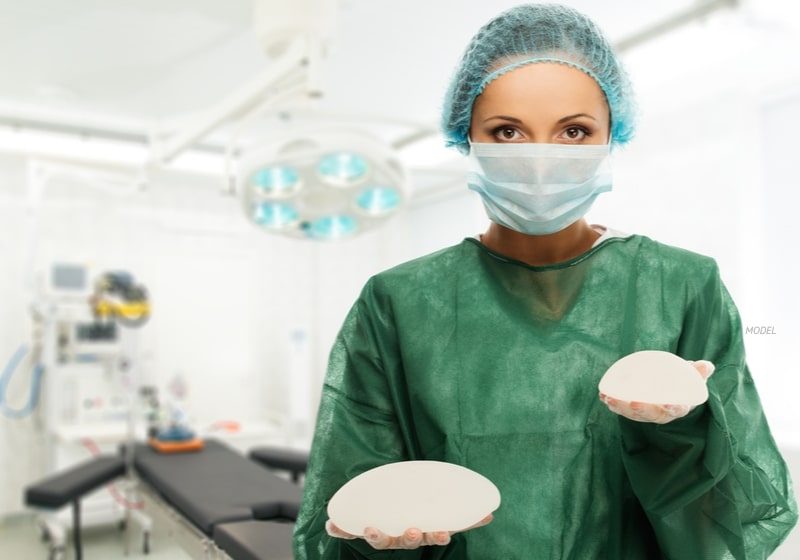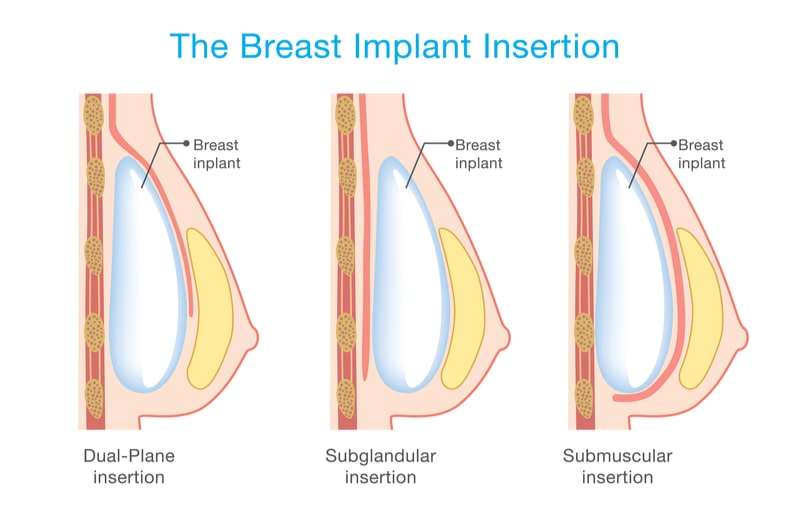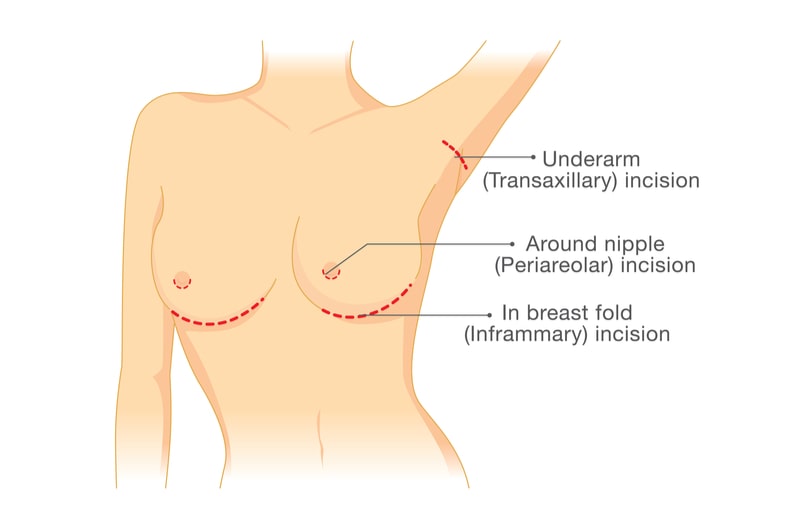3 Minute Read:
If you are considering breast augmentation, you have five fundamental decisions to make: the type, size, shape, implant placement, and location of your incisions.

Your consultation is an excellent opportunity to discuss these matters with your plastic surgeon, who will probably ask you some specific questions about your lifestyle and expectations.
7 Things to Discuss at Your Breast Implant Consultation
1. Type of Breast Implants
You can choose from saline or silicone breast implants:
- The advantages of saline are that these implants can often be placed with a smaller incision, and if it ruptures, you will know right away since the contents will be harmlessly absorbed into your body. Disadvantages are that they may look less natural than silicone implants and are more prone to rippling, which causes the implant’s edges to show through the skin.
- The advantages of silicone implants are that they are available in natural shapes and feel softer to the touch. These implants are safer than silicone implants of the past as they are made of cohesive silicone material that holds its shape. The disadvantage is that an MRI or ultrasound is needed to detect leaks. If you choose silicone implants, be sure to report any changes in their shape to your doctor immediately.
This decision will be thoroughly discussed during your consultation.
2. Size of Breast Implants
When deciding on the size of your breast implants, remember that the number one complaint after breast augmentation is that the increase achieved is too small. However, if you are an athlete, dancer, or otherwise highly physically active, you want to be careful about going too big, as large implants can interfere with performance.
3. Shape of Breast Implants
Most saline breast implants are round, and silicone implants can be round or teardrop (anatomically) shaped. Rounder implants can appear fuller, while silicone appears more natural-looking. Round implants also prevent distortion if they rotate in the pocket.
4. Implant Placement
Implant placement is important, and there are three options:

- Subglandular placement refers to placing the implant underneath the breast tissue but above the chest muscles of the chest. This technique is best for women with plenty of natural breast tissue and provides a more dramatic effect.
- Submuscular placement refers to placing the implant underneath the breast tissue and chest muscle. This method reduces the chances of rippling with saline implants and is often chosen by more active women (except bodybuilders). This technique is also suitable for women with very little natural breast tissue.
- Partial submuscular implants are placed beneath the breast tissue and partially under the pectoral and chest muscles.
*Because bodybuilders flex their muscles often and intensely, they may opt for over the muscle placement because this can distort the implants placed under the muscle.
5. Profile
The profile of the implant refers to how far it projects out in front. Lower profile implants will have a broader base and not project as much as high profile implants. These are appropriate for women with wider chest walls. High-profile implants will have a narrower base, project further, and are suitable for more petite women.
6. Incision Location
There are three main incision types for breast augmentation:

- Periareolar – this incision runs under the lower half of the areolas
- Inframammary – this incision extends along the breast crease
- Transaxillary – this incision is made in the armpit
Any resulting scars tend to fade over time and are usually barely noticeable.
7. Your Expectations
Above all, be sure to precisely communicate your desired results so that your surgeon understands your expectations. This will help ensure that you are happy with your breast implant surgery outcome.
Breast Implants in Miami, FL
Dr. Leonard Hochstein is a board-certified plastic surgeon and a leader in his field. Learn more about choosing your breast implant type, shape, size, placement, and incision location by scheduling a breast implant consultation in Miami, Florida today!
Call our office at (305) 931-3338 or click the link at the top of this page to contact us.